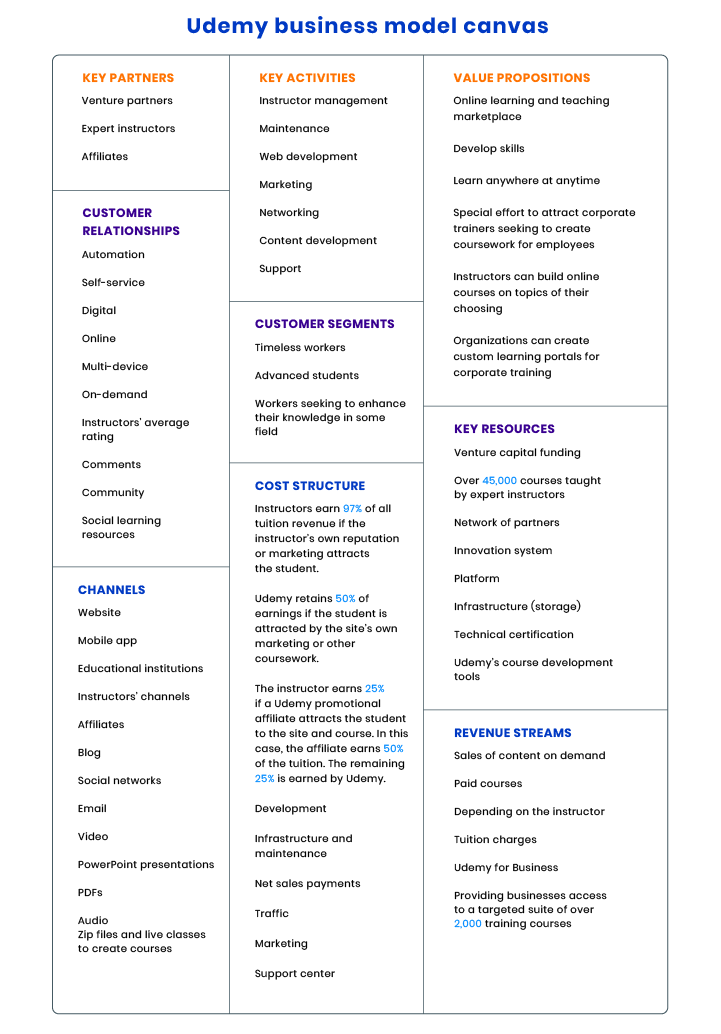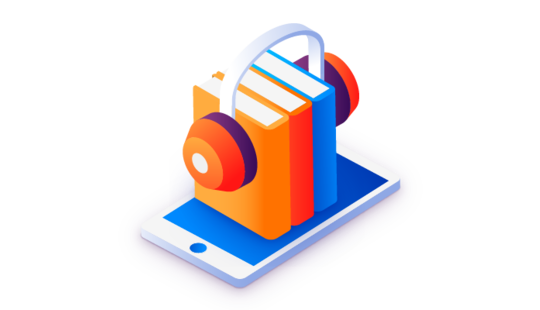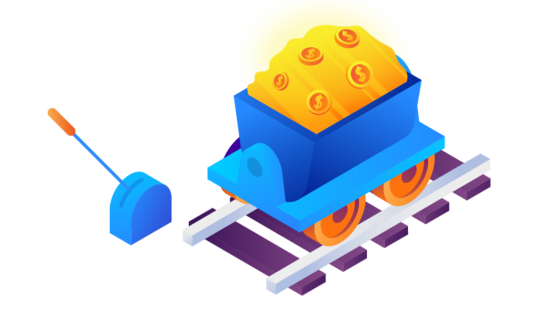-
Product Management
Software Testing
Technology Consulting
-
Multi-Vendor Marketplace
Online StoreCreate an online store with unique design and features at minimal cost using our MarketAge solutionCustom MarketplaceGet a unique, scalable, and cost-effective online marketplace with minimum time to marketTelemedicine SoftwareGet a cost-efficient, HIPAA-compliant telemedicine solution tailored to your facility's requirementsChat AppGet a customizable chat solution to connect users across multiple apps and platformsCustom Booking SystemImprove your business operations and expand to new markets with our appointment booking solutionVideo ConferencingAdjust our video conferencing solution for your business needsFor EnterpriseScale, automate, and improve business processes in your enterprise with our custom software solutionsFor StartupsTurn your startup ideas into viable, value-driven, and commercially successful software solutions -
-
- Case Studies
- Blog
How to Create a Learning Website: Tips You Should Know Before Starting Development
The changes that 2020 brought have affected the world of business, and it’s no wonder a lot of companies are moving online. The coronavirus situation has also influenced the educational sphere, and demand for online learning is higher than ever.
If you’re wondering how to create an online learning website and want to know details such as necessary features, possible monetization strategies and development approaches, challenges you may face, and ways to overcome them, this article is for you.
Let’s dive into the topic starting with the definition of an e-learning marketplace.
What’s an e-learning marketplace?
A marketplace is a two-sided platform that connects service providers with customers. An e-learning marketplace is any online platform that provides educational content. There are numerous types of e-learning marketplaces:
- Marketplaces for private tutors. For example, Preply and italki are platforms that connect language tutors and language learners.
- Marketplaces for sharing scientific papers. ScienceOpen and ResearchGate are just a couple representatives of this category.
- Marketplaces for employee training allow employers to create training sessions for staff in order to increase their expertise. Kitaboo Insight is an example of an online training platform for employees.
In our article, we’re going to consider marketplaces that offer online courses.
On one side of such a platform are educational institutions or private instructors who create and upload courses. On the other side are users ‒ students, specialists, or anyone who’s interested in broadening their horizons ‒ who watch and buy courses.
Let’s have a look at popular representatives of e-learning course marketplaces.
Coursera
Coursera is an American online learning platform that offers courses from world-known universities and companies. On Coursera, users can take courses, complete guided projects, obtain certificates, and even get university degrees.

The unique value proposition (UVP) that makes Coursera stand out from the crowd is its cooperation with higher educational institutions and professional tutors. Moreover, the platform provides university certificates that prove students’ knowledge and skills.
Udemy
Udemy is another American online learning giant. Courses presented on Udemy are mostly uploaded by private instructors rather than organizations. The platform offers approximately 130,000 courses in more than 65 languages.

The UVP of Udemy is its Udemy for business service that provides companies with access to more than 5,000 courses for enhancing employees’ skills.
edX
edX was established by the Massachusetts Institute of Technology and Harvard University. The platform provides a number of university-level courses for students all over the world. Those seeking a job promotion or a new position will find useful courses on edX.

The edX UVP is its non-profit and open-source nature. In particular, the Open edX solution allows edX users to add features to the platform and improve it.
LinkedIn Learning
This e-learning platform is a LinkedIn project aimed at enhancing the professional skills of LinkedIn users. On the LinkedIn Learning platform, there are over 12,000 courses in three major categories, namely business, creativity, and technology.

The UVP of LinkedIn Learning is its Set a goal feature that addresses the challenges of consistency and motivation that are typical for a lot of learners. With this feature from LinkedIn Learning, users get reminders of goals they’ve set and are encouraged to continue learning.
If you want to create a similar platform that attracts millions of users, have a look at the features it should include.
MVP feature list for an e-learning marketplace
Just like any multi-vendor service marketplace, an e-learning platform should include features for administrators, learners, and service providers. Below, we’ll consider the features for the first version of your product to meet the primary needs of three types of users.
Features for admins
An admin panel should give admins the ability to manage instructors, learners, courses, orders, payments, reviews, and contact requests. Also, marketplace owners or super administrators should have the ability to create, view, and edit admin accounts.
Features for instructors
- A personal profile should include an instructor’s name and surname, their job title, a description to interest learners, certificates that prove their professional expertise, and a list of courses offered.
- A course management feature should allow instructors to add, edit, or remove courses. There should be functionality for managing course sections, videos, documents, etc. Instructors should be able to easily interact with different formats like video, audio, and PDF documents.
- A view orders feature should give instructors information about learners who have watched or bought their courses. Instructors should also be able to receive notifications about new orders in their account or by email.
- A payment management feature should let instructors view and edit their payment details in order to get paid for selling their courses. Instructors should also be able to see how much money they earn via the platform.
- Reviews and ratings let instructors view and respond to feedback from learners.
Features for learners
- Personal profiles should give general information about learners. By providing an email address in their profiles, learners should be able to get notifications about current courses and new offers.
- A payment method feature allows learners to decide how they’re going to pay for courses or subscriptions. Learners should be able to edit payment information as needed.
- An explore courses feature should allow learners to find a course quickly. To simplify the search process, implement categories and filters.
- A cart with orders allows learners to check whether they’ve chosen the right courses and lets them approve or cancel their purchases.
- My courses is a list of purchased and watched courses that gives learners a chance to rewatch courses. Learners should also be able to view the progress of current courses.
- Notifications should inform learners about order confirmations, new courses, or special offers like discounts.
- A start/continue the course feature should give learners the freedom to watch course videos and complete assessments and assignments at any convenient time.
- A get a certificate feature can allow learners to request a certificate, view it, download it, and share it via social media.
- Ratings and reviews should be available so learners can share their opinions on courses.
These features will ensure the proper functioning of your online learning marketplace and meet the basic needs of your customers.
Questions to answer when building an e-learning marketplace
Providing only the necessary feature set isn’t enough to create a successful online course marketplace. In addition to providing basic functionality, you should answer a number of questions while building an e-learning platform. We discuss the most common ones below and provide you with some answers to consider.
Who will use your platform?
The e-learning industry is forecasted to grow to $5.3 billion by 2025, and the competition on the market is fierce. You should figure out who your potential customers are and define the niche you’re going to fill. To find out this information, you can start with persona research.
A marketing persona possesses the characteristics of your typical potential customer, including their age, place of residence, profession, likes, dislikes, hobbies, problems they need to solve, and possible solutions they expect.
Once you understand your marketing persona, you can concentrate on defining your niche. E-learning giants like Udemy and Coursera have courses in almost any specialization, so offering the same wide range of courses might not allow you to survive the competition. You might want to consider narrow niches like IT education (Codecademy) or arts (MasterClass).
Your choice of niche will define how your marketplace operates. There are two models: academy and night school.
The academy model is when you provide long-term courses that help students enter a profession. This model ensures high retention rates, since students are motivated to get specialized knowledge. Coursera operates according to this model.
The night school model allows learners to get knowledge through an e-learning platform after their main studies or job. Short courses are usually offered via the night school model and are aimed at training specific skills. Udemy and LinkedIn Learning use the night school model.
Once you’re ready with a depiction of your potential customers and understand how your platform will operate, it’s time to attract the first adopters.
How will you attract your target audience?
Every marketplace faces the chicken and egg problem, and there are three ways to solve it: attract service providers first, attract customers first, or attract both at the same time. Here’s how Udemy solved this problem.
Udemy started to create their customer base by attracting instructors. But they also needed to find students fast to retain those instructors.
You need to keep things in balance. We knew instructors wouldn’t stick around for long if they didn’t have access to interested students.
When the first instructors started to post their courses, these were the ways Udemy management promoted their platform:
- SEO. Udemy optimized content to rank their site higher in search results. It worked great, and now we can see Udemy among the top 10 sites in a search for “online courses.”
- Launching a mobile app played a vital role in promoting Udemy, since a lot of users look for on-the-go learning opportunities.
- Reviews ensured transparency and trust inside the platform, attracting more users to an e-learning marketplace that already had satisfied customers.
How will you make money?
There are different ways to make your marketplace profitable. With e-learning platforms, the following approaches can work:
- Revenue sharing is an approach when the cost of a course is divided between a marketplace owner and instructor. Udemy sticks to this approach. Depending on the channel through which courses are sold, Udemy charges a commission from 3% to 50% of the course price set by the instructor.
- Subscriptions mean that learners pay a fixed price for a fixed period of time and are then free to access any content available on the online learning platform. On LinkedIn Learning, users get a monthly or yearly subscription to access all courses available on the platform.
- Paid services can be courses, certificates, or handouts — literally anything that’s offered via your platform. While there are many free courses on Coursera, certificates that prove course completion are paid.
You can either choose one approach that best suits your business needs or combine a couple of them to monetize your platform.
How will your business operate?
Before you can launch your e-learning marketplace, you should clearly understand how it’s going to operate. One of the best ways to do that is to fill out a business model canvas. This one-page document covers the main aspects of your business such as your value proposition, key activities, and revenue streams. With this information in hand, you’ll be able to understand your business opportunities, challenges, and ways to overcome them.
Let’s use a business model canvas for Udemy as an example for your own business model canvas.

How will you create an e-learning website?
There are several development approaches for building online products. For creating an online learning marketplace, we’d like to turn your attention to open source and white label solutions. These two types of solutions allow you to build a functional platform fast and cost-effectively.

Open source approach
Open source solutions allow non-technical users to build their own online platforms. This development path offers a number of templates and plugins to choose from so you can mix them and experiment while building your platform. Open edX and LearnDash are examples of open source solutions for building an online learning platform.
You might opt for this development approach since it’s cheaper than others. However, products built with open source platforms won’t be as customizable and secure as products built with other approaches such as tailored development or a white label solution.
White label approach
White label software comes with built-in features that allow you to create your product without coding and technical skills. You just need to select what features you need for your marketplace and developers will implement them for you. Moreover, your product will have your unique branded UI. You’ll also own the code, which means further customization or scaling won’t be a problem. Last but not least, building a marketplace with a white label solution takes only a couple of months.
How will you verify instructors and courses?
To provide high-quality content on your e-learning marketplace, you should verify both instructors and courses. Let’s consider Udemy to see how you can organize the verification process on your platform
Instructors can be verified on Udemy using an automated or manual method. Usually, verification happens automatically when an instructor or any user who submits a course on the platform provides their name, surname, birth date, address, and government-issued ID number. Once this information is provided, Udemy begins automated verification.
If troubles appear during automated verification, manual verification is required. To pass manual verification, an instructor needs to send an email to Udemy with personal information. They should also attach a video where they confirm they own the course they’re submitting.
Course verification or review is a must on Udemy. Before publishing any courses on the platform, Udemy management reviews course content. Udemy also checks whether a course meets Udemy quality guidelines. These include standards regarding video and audio quality, the number of course sections, and course duration.
How can you retain users?
For the successful operation of your platform, it’s not enough to simply attract customers. It’s much more important to retain them and make them promoters of your brand. So what strategies can you use to achieve this goal?
- Maintain communication. Send active users notifications about new courses once a month so they don’t forget to visit your platform. You can also remind users to complete courses they’ve started but haven’t finished. Your notifications can include special offers or information about sales.
- Develop an app for your platform. It’s much easier to stay in touch with your customers if they use a mobile app. We keep our smartphones close at hand, and it’s faster and more convenient to check in-app notifications than emails.
- Encourage interactive and well-built courses. Let instructors divide their courses into modules, create assessments after every module, and diversify course content with useful handouts. You can come up with guidelines or quality standards that instructors should meet when creating their courses.
- Create a community inside the platform. Provide a place for users ‒ both instructors and learners ‒ to communicate, discuss issues, and share experiences. Udemy and Coursera have communities to bring their users together.
How will you solve disputes?
You should think of policies that will help you manage any issues customers might face when using your platform. Your policies should foresee disputes that might occur on the part of both learners and instructors.
Let’s have a look at the most common issues you might encounter as a marketplace owner and the ways in which popular online learning platforms solve them.
Refund policies
Large e-learning platforms all have refund policies. However, the terms are different. For example, Udemy and LinkedIn Learning provide 30-day course refunds regardless of the reason. Coursera offers full or partial refunds depending on the service customers purchased. Skillshare offers refunds for yearly subscriptions but doesn’t do the same for monthly subscriptions.
Copyright issues
To protect the intellectual property of course owners, Udemy puts watermarks on videos and uses a built-in player that doesn’t allow videos to be downloaded. If Udemy management finds out that an uploaded course content infringes copyright laws, they’ll delete it and terminate the responsible instructor’s account.
Summing up
E-learning became a trend years ago, but it’s even more popular now. If you’ve wanted to create your own online learning platform, it’s time to act. Think about your business idea in general and in detail, foresee possible challenges, and start developing your successful e-learning platform.
FAQ
-
There are three types of users on an online learning platform, and your task is to provide functionality for each of them.
Administrators should have an admin panel to manage the platform’s content.
Instructors should be able to use features such as personal profiles, course management, view orders, payment management, reviews, and ratings.
Learners should have access to personal profiles, payment methods, course exploration functionality, a cart, a list of active courses, notifications, course content, certificates, and a system for ratings and reviews.
-
When building an e-learning marketplace, you should answer the following questions:
- Who will use your platform?
- How will you attract your target audience?
- How will you make money?
- How will your business operate?
- How will you create an e-learning platform?
- How will you verify instructors and their courses?
- How will you retain customers?
- How will you solve disputes?
-
There are two primary approaches suitable for e-learning marketplace development: using open source software or purchasing a white label solution. While open source software is relatively cheap, it doesn’t provide top security and customization. That’s why you might want to opt for a white label solution.
At RubyGarage, we’ve created a white label solution to help you build a marketplace fast and cost-effectively. If this is what you’re looking for, contact us to get started.










